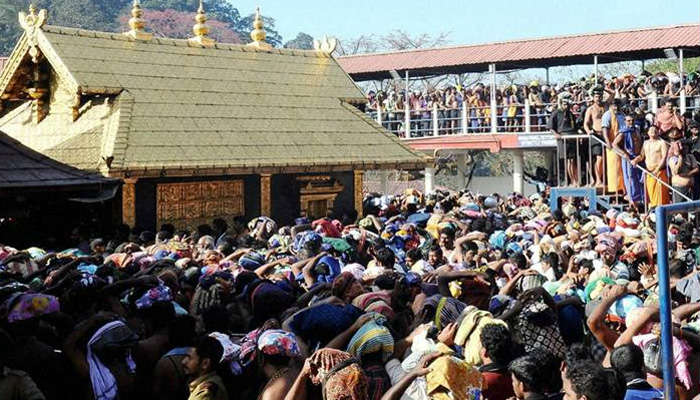
The Sabarimala Dharma Sastha Temple has been a place of Hindu unity since time immemorial. It is the place where people forget their differences to meet in a single place with the feeling of brotherhood and have the darshan of Sri Dharma Sastha.
As it has always been a bulwark against the conversion activities of the evangelists, it has always been in the headlines for the wrong reasons. Sabarimala Sri Dharma Sastha Temple is Kerala’s richest temple and millions of devotees from different parts of the country climb the hill by crossing forests and mountains to have Darshan of Ayyappa or Dharma Shasta every year. For this reason, Sabarimala has been targeted many times like the temple burning in 1950 (in which action on the accused is yet to be taken for it is alleged to have been done by the Christians living in the foothills of the temple, who were settled by the British as plantation workers), planting of crosses for propaganda by evangelists, attacks on the traditions of the temple etc.
The most recent attack is on the temple tradition of not allowing the entry of women of menstruating age. The restriction is not for all women, but for those who are aged between 10 to 50 years. Post-menopause women and children can enter the shrine. Women of menstruating age are restricted since the deity of the temple is in Brahmacharya stage, in which he should avoid contact with women. Another thing is that according to the tradition, Sri Ayyappa had promised Goddess Malikapurathamma to marry her when there are no new pilgrims to the temple. So according to the tradition, even the entry of the Goddess herself is restricted.
Various liberal intellectuals, under the evangelist influence, ask for the scriptural references of this tradition called Brahmacharya followed in the temple, claiming that there is no such reference and it is only a ploy of the upper castes to discriminate against women. But contradicting their claim there are many scriptural references speaking about the practice of Brahmacharya which we have quoted below:
- Apastamba Dharma sutra (1.1.3.16) – “strIbhiryAvad artha sambhAShI” – He shall speak with women so much (only) as his purpose [note: purpose for a brahmacari is explained in 1.1.3.26-30 – to seek alms for daily food). So, a brahmacari cannot speak to a woman except to seek alms.
- Bodhayana Dharma Sutra (1.2.3.23) also gives same rule as Apastamba does above
- Vaikhanasa Dharma Sutra – (2.1) states that seeing and touching women are prohibited for brahmacari (“..strI darshana sparshana..”)
This problem started when a Devaswom board commissioner appointed by the then communist government of Kerala, S. Chandrika, entered the temple with her daughter-in-law, breaking the tradition. Following this, a petition was filed in the Kerala High Court by S. Mahendran, a devotee of Ayyappa from Changanassery.
Mahendran, in his petition, complained about young women trekking to Sabarimala and offering prayers at the Sabarimala shrine, and alleged special treatment being given to wives of V.I.Ps. He pointed out a specific instance of the first rice-feeding ceremony of the grand-daughter of the former Devaswom Commissioner Smt. Chandrika, conducted at Sabarimala temple in the presence of her daughter, the mother of the child, and other relatives, including women. A photograph which appeared in the Janmabhoomi daily of 19-8-1990 was also enclosed along with the complaint petition. He sought suitable action to be taken against the persons concerned.
This case which was heard by a bench under Justice K. Paripoornan ordered for a devaprashnam, which is a traditional practiced followed in Kerala to know about the wishes of the deity. The devaprashnam conducted in this regard also revealed that the Lord does not wish to allow the entry of menstruating age women as he is observing his Brahmacharya vrata, following which a judgement was given in the Kerala High Court banning the entry of women aged between 10 and 50 years.
Now, if these ‘progressive’ feminists wish to visit Sabarimala by breaking the tradition and the Lord’s wishes revealed in devaprashnam, then that means they do not have any devotion or respect towards Ayyappa. If they have no devotion or respect, why even bother about visiting the temple?
Another thing is that pilgrims must climb hills and cross forests to reach Sabarimala as pointed before. Along with this they must also observe vratam or strict observance of vows for 41 days before visiting the temple – it would be hard for women to observe this practice of Vrata for 41 days as it will disturb their menstrual cycle. Also, since Ayyappa at Sabarimala is a Naishtika Brahmachari, the energy in the temple may create an imbalance in the natural creative energy present in women of reproductive age; if they are repeatedly exposed to those energies over a long period, it may prevent household women from doing their duties. Hence, only those who are yet to attain puberty or those who have already reached menopause undertake the pilgrimage.
The feminists who ask for the entry of women in the temple have always been silent about the traditions followed in the temples like Attukkal, Chakkulaththukkavu etc., where women enjoy the special rites of keeping pongala, naari pooja etc. So, one more question which arises in the minds of local Hindus who follow traditions is whether feminism, according to these feminists, is about making women dominate men leading to misandry, contradicting its original motive of giving equal rights to both the genders of humanity?
The people who support women entry also includes so called right-wing Hindus with a leftist attitude. They have personally harassed the Hindu women activists who support the age-old tradition in a most vile manner, by stating it as Christian propaganda to divide Hindus. But these ‘right wingers’ are sadly infected with distorted left-liberal view points, which will only cause harm to Hindu society.
Sure, Hindu traditions are open for reform, but these reforms must only come from within the tradition itself, i.e. they must be guided by the practicing Acharyas of Hindu tradition as well as Pramanas or authoritative texts. Should Hindu Dharma be subjected to unnecessary reforms just because the left-liberal feminists and the evangelists say so?
We must also keep in mind that each Hindu temple has its own tradition and local practices. The mode of worship also varies from one temple to another. There are numerous other Ayyappa temples in Kerala where women of all ages can worship Ayyappa. The Sabarimala temple itself is connected with three other sastha temples, explaining the four stages of a dharmic life. While Sabarimala temple represents the stage of Brahmacharya or Student, the three other temple representing the three stages of life as Bala, Grihastha and Sanyasa allow women of all ages to worship the Sastha at these temples. So, we must respect and preserve all these diverse traditions of various temples.
Source : Hindupost
Is it right or wrong to prohibit women from going to Sabarimala Devasthan ?
‘Women in the age group of 10 – 50 years (women in this age group have menses), are prohibited from going to Sabarimala Devasthan in Kerala since ancient times. One lady questioned Shri. Gopalakrushnan, office bearer of ‘Travancore Devaswam Mandal’ in this context. On this, he had replied that women would be allowed when a machine is invented to find out whether woman-devotee visiting temple is menstruating or not. Nikita Azad, a college student from Kerala has started a movement on social media called ‘Happy to bleed’ to protest against that reply. TV channel like ‘ABP Maza’ has started making noise about women emancipation. Sanatan’s perspective on this issue is given below.
1. Two important reasons for creation of such row
A. Shri. Gopalakrushnan should have given answer to this question in decent language. Had he explained the ‘Dharma-shastra’ behind prohibition on women from going to this temple, such row could have been avoided.
B. Leftist parties, which are presently not in power in Kerala, are undertaking such futile movements and its examples are – ‘beef festival’, ‘Kiss of Love’, ‘happy to bleed’ etc. Movements like ‘Right to discard burqa’ or ‘Right not to give talaq’ are never even thought of.
2. Reason behind prohibition on women from entering Sabarimala Devasthan
A. Bhagavan Ayyappa is created from the Principle of Bhagavan Shiva and ‘Mohini’ incarnation of Shri. Vishnu. He observed celibacy throughout His life. Women from the age group of 10-50 years are not allowed there to honour his celibate life.
B. People observing vow of Bhagavan Ayyappa Swami has to observe celibacy for certain period. The rules for observing such vow are stringent and during such period only, they go for ‘darshan’ to Sabarimala Devasthan. There should not be any distraction for people observing such vow is also one of the reasons behind such prohibition.
3. Spiritual reason behind women not going to Devasthan during menstruation period
A. Spiritual Science analyses every act in Dharma-shastra based on ‘trigunas’ viz. ‘Sattva (Purity)’, ‘Raja (Activity)’ and Tama (Ignorance)’. As per spiritual science, there is increase in ‘Raja’ component in a woman who is menstruating. Such woman when comes in contact with any ‘sattvika’ person, place or thing, the ‘Raja’ component decreases and it can lead to cutting short her menstruation period; so to avoid that, she should not go to temple or for ‘darshan’ of Saint since there is possibility of stopping of her menstruation cycle at the age of 30-35 years owing to ‘Sattvikata’. If menstruation cycle is stopped, her capacity to bear children also reduces. ‘Dharma-shastra’ therefore, insists for woman following the rules of menstruation for woman to bear fine children.
B. There is lot of ‘sattvikata’ in a temple due to the idol of Deity. ‘Raja’ component increases in a menstruating woman. In such situation, that woman cannot bear the ‘Sattvikata’ in a temple and faces lot of distress if ‘Raja’ component is high. A woman with less of ‘Raja’ component, suffers less.
C. There are two types of ‘sadhana’ explained under Hindu Dharma viz. ‘Karma-kaanda’ as per the path of devotion and ‘Upasana kaanda’. Performing ‘puja’, going for ‘darshan’ in a temple, observing different vows, sacred fire, reading of ‘strotras’ come under ‘Karma-kaanda Sadhana (ritualistic spiritual practice)’. When such ‘sadhana’ is practised, following all rules of ‘Dharma-shastra’ viz. menses, observing ‘soyara-sutak’, ‘shauch-ashuach’ etc. is necessary.
4. Why only Hindu Dharma is targeted by activists fighting for woman emancipation ?
Women are not allowed to enter the famous Hazarat Nizam Durgah and Jama Masjid in Delhi (which is the biggest mosque in India). At Haji Ali Durgah in Mumbai where Muslims offer ‘chadar (cloth-sheet)’, women are not allowed. Few women devotees filed a case in Court; but no decision was taken by Court in the matter; except advising petitioner to decide by discussing the issue with the concerned. Why the ‘woman-emancipation’ activists never raise voice against this ?
5. ‘Dharmacharan’ is the root of happiness !
‘Sukhasya Moolam Dharma:’ means Dharmacharan (abiding by Dharma) is the base of happiness. Therefore, people loyal to Dharma follow everything as per ‘Dharma-shastra’. If one wants to follow this path, its rules and regulations should also be followed since it gives spiritual benefits. If one starts doing whatever one wants, it can give mental satisfaction but no spiritual benefit.
– (Paratpar Guru) Dr. Athavale (30.11.2015)
Related News
‘Activist’ Rehana Fathima, who had tried to desecrate Sabarimala temple, sacked from BSNL
For 18 months, Rehana Fathima was under suspension after BSNL had received complaints from the public about her abusive posts Read more »
Centre on Sabarimala : Court cannot interfere in all religious customs
The Centre has come out with a stern stand in connection with the Sabarimala issue. The court cannot interfere in all religious customs. Read more »
Sabarimala temple body hits streets again, protests outside Secretariat
The Sabarimala Karma Samiti, an apex body of various Hindu organisations opposing the September 28 verdict on the hill temple, began its hymn- chanting protest outside the state secretariat on Saturday seeking the withdrawal of cases against its workers. Read more »
‘Will SC decide how birth of Jesus took place’ : BJP MP Meenakshi Lekhi
In the video she questioned whether the Supreme Court would decide how Jesus took birth or which body should be buried or cremated. Read more »
Rashtriya Hindu Andolan at Sambhajinagar for various demands of Hindus
Bursting of crackers should be banned for the period, 25th December 2018 to 2nd January 2019 as per Supreme Court’s orders and there should be ban on crackers made in China, was the main demand Read more »
Govt should pass an Act for protection of religious traditions : demand Hindus
Demonstrations were staged under aegis of ‘Rashtriya Hindu Andolan (RHA)’ at Ratnagiri by all pro-Hindu organizations for various demands Read more »
Khed : Hindu organisations submit representation to local administration
HJS and various pro-Hindu organizations submitted representation to Revenue Nayab Tehasildar Nilesh Dake with various demands such as protecting religious traditions in Sabarimala Temple Read more »
Devout Hindu activists have no choice but to unite in forthcoming period : HJS
Conspiracy is hatched to defame Sanatan Sanstha and Hindu Janajagruti Samiti (HJS) through various machinery and means. Even then, these organizations are working on the principle of ‘Satyamev Jayate’ Read more »

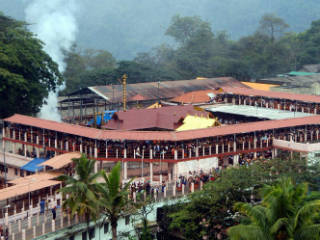

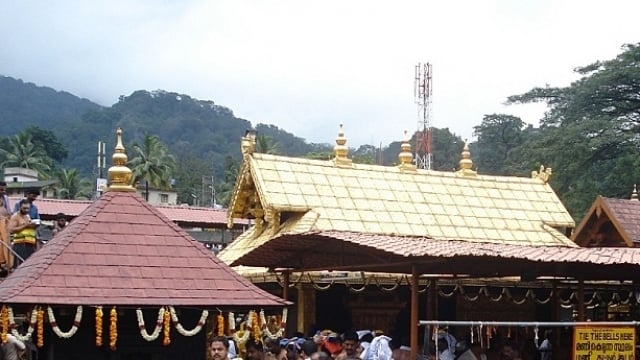
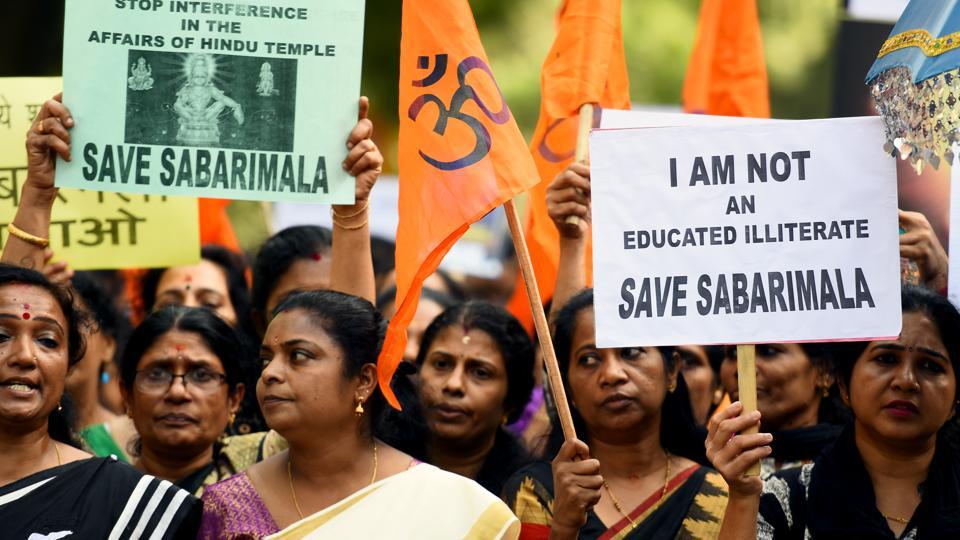
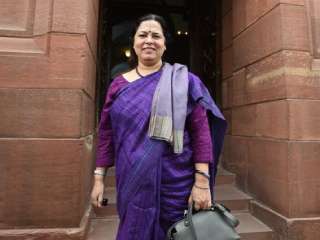
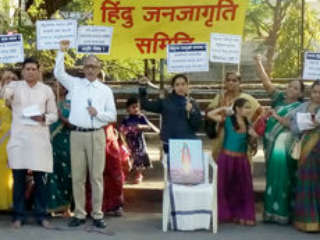
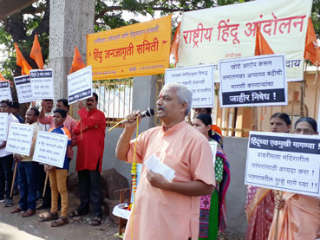
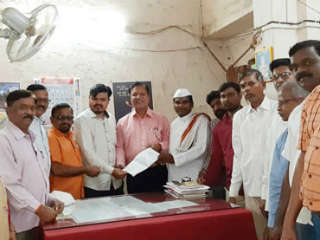
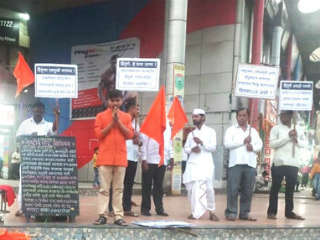
 Shani Shingnapur : Tradition of prohibition on women to enter Shanidev’s temple sanctum
Shani Shingnapur : Tradition of prohibition on women to enter Shanidev’s temple sanctum